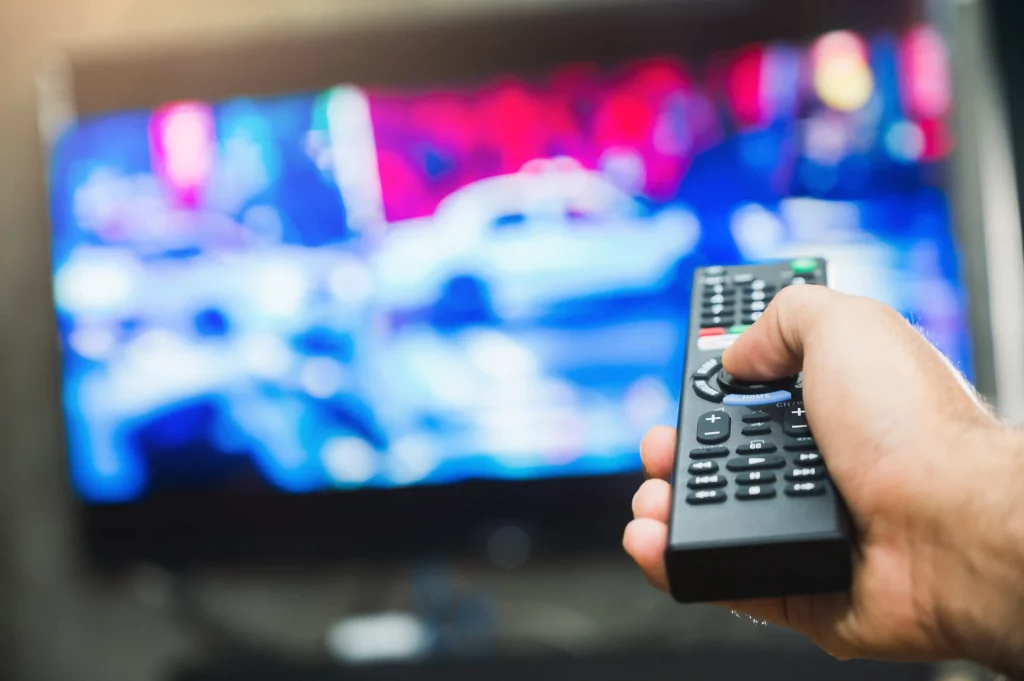Trends
Trends
JUN
03
2025
Broadcast
Pioneers in ultra high-quality on DTT
In February 2024, Spain became the first country in the world to offer regular broadcasts of Digital Terrestrial Television (DTT) in Ultra High Definition (UHD). And it is poised to expand the number of channels broadcasting in UHD this year, a milestone that reinforces its leadership in free-to-air television in Europe. This step forward will allow viewers to enjoy unprecedented image and sound quality, consolidating DTT as a pillar of territorial cohesion and universal access to information.
In its role as manager of the DTT network in Spain, and as the largest telecommunications infrastructure operator in Europe, Cellnex is actively collaborating in this transformation hand in hand with the entire sector. “At Cellnex we are specialists in managing critical infrastructures, one of which is DTT, which is a strategic element for the sovereignty of national communication and a secure way to transmit information in emergency or crisis situations, as was shown in recent episodes such as the Valencia floods and the national blackout,” says Jaume Pujol, from Cellnex Spain, Vice President of Broadcast Networks Europe (BNE) and secretary general of Televisión Abierta. It also plays an outstanding role as a guarantor of responsible and truthful information in a context of widespread fake news: “Broadcasters have an editorial responsibility, and there are audiovisual licenses and regulatory frameworks that act as insurance.”
Alongside the rise of streaming, DTT continues to dominate the TV audience in Spain, with 71.1% of viewing hours, compared to 19% of IPTV (internet television), according to the 2024 audience report by Barlovento Comunicación based on data from Kantar Media. According to this report, “99.5% of the population will have watched DTT by 2024, with an average of 27.4 million daily viewers, representing almost 60% of the population.”
In this connection, March 2025 saw the publication of the new National Technical Plan for DTT, which will bring improved broadcast quality with the progressive implementation of UHD and the migration to DVB-T2. This innovative technology will not only increase resolution and improve sound, but will also allow for more realistic colours, improved brightness management —especially useful in images that mix light and dark— and improve the image refresh rate, providing better quality in fast-moving images. “We will manage a public resource —the spectrum— much more efficiently, almost doubling its capacity to offer a much more complete user experience” said Xavier Redón, Product Manager at Cellnex and vice president of UHD Spain. “The new broadcast system will provide greater resolution, brightness, colour enhancement, and next-generation audio features that make it easier, for example, to separate conversations from background noise.”
Users will need DVB-T2 and HEVC-compatible televisions to take advantage of these improvements. To ensure that the service is universal, UHD broadcasts will coexist with current broadcasts until at least 90% of television sets are next-generation models. In this connection, the Government’s National Plan will require all new TV sets sold to be compatible with DVB-T2, HEVC, and UHD as of 2025.
The forward stride of UHD DTT coincides with the trend toward larger television sets, driven by improved resolutions and affordable prices. According to GfK, the average size of TV sets in Europe has steadily increased over the last decade and is now almost 50 inches. “We are moving towards an environment in which screens are getting bigger and bigger, and homes are often getting smaller and smaller. In this context, a higher resolution makes perfect sense, with 4K being key,” explains Redón.
In addition to improving the user experience, DTT is a more sustainable solution for distributing linear content compared to streaming or IPTV. A study by LOCAT reveals that DTT consumes just 14 Wh per hour, compared to 109 Wh for streaming and 153 Wh for IPTV (internet TV), significantly reducing the carbon footprint. “DTT is a much more energy-efficient solution. Sending the same content to everyone only once is much more efficient than sending it countless times to each user” is the conclusion reached by Cellnex.
With this modernisation, Spain continues to be a European pioneer in connectivity, innovation, and sustainability in audiovisual distribution, ensuring a free, universal, and accessible service for all citizens and under all circumstances.

















